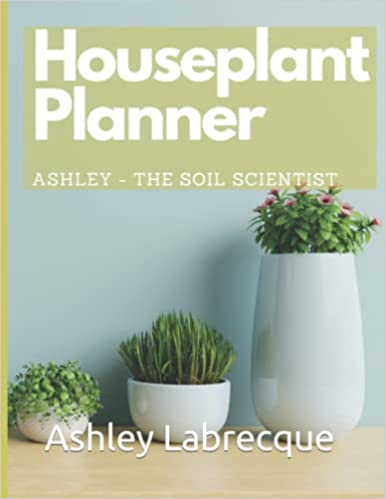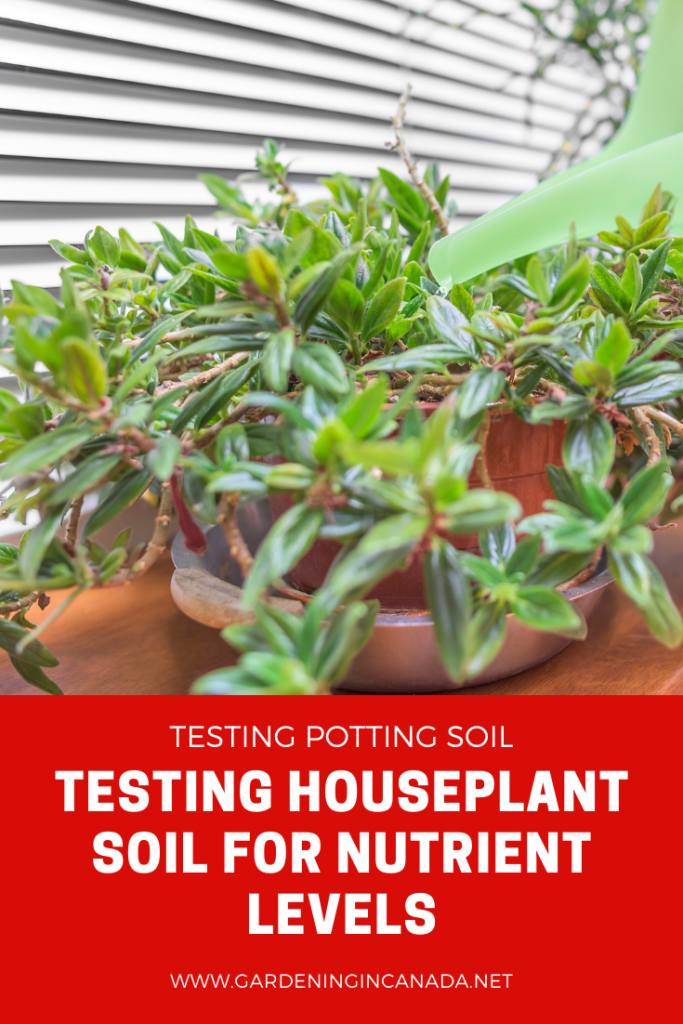- Canada’s Growing Zones Are Changing 2024 - January 12, 2024
- Attracting Wildlife To The Garden - May 16, 2023
- How To Garden Near A Septic Tank - May 9, 2023
Powered by RedCircle
Have you ever wondered if you’re houseplant potting soil is nutrient deficient? Well, you’re not alone and in this article, we are going to be taking a soil scientist recommendation on how to test house plant potting soil for nutrients.
If you are new to this blog my name is Ashley and I am a soil scientist. I am located in a Canadian Zone 3 and a USDA Zone 4. I write articles, make YouTube videos, Instagram & Facebook posts all designed for Canadians and Cold Climate gardeners using science-based methods. If you are looking for anything specific be sure to let me know in the comments down below.
Can You Bring Potting Soil To A Soil Testing Lab
As a scientist, I am always going to advocate you go to a lab for your soil testing. But when you have a ton of houseplants in each container it has a different value for nutrients that can get a little bit pricey. Sure you can get those testable options from the store. But in reality, those also are expensive and not always that accurate.
This gardening in Canada article is going to give you two unique ways to test how much nutrients you have present in your house plant soil. If you miss the article on whether or not to fertilize during the winter months be sure to check that out. The answer may surprise you.
Normal signs of nutrient deficiencies
One of the easiest ways to tell if there’s a nutrient efficiency is through the upper biomass. Upper biomass is almost always going to tell us if there is an issue after the fact. But in many cases, if it is a nutrient efficiency issue it can be corrected. Keep in mind if you are showing signs of any of these problems there may be other causes.
For more information and actual visuals on what each one of these looks like I suggest checking out the YouTube video, I made discussing this topic.
Signs of nutrient deficiencies in houseplant soil
- Chlorosis (Yellowing), or interveinal (green veins)
- Generalized discolouration
- Stunted growth
- Leaves turning purple or reddish
- Necrosis

Grab Your Houseplant Planner Today!
There is disease identification, pest identification, propagation tracking, quarantine tracking and more.
Normal signs of excess nutrients in houseplant soil
A great sign of over fertilization is also shown in the upper biomass. Now keep in mind it is a delayed response and therefore it may be too late to treat. If you ever find yourself in a situation where you have excess nutrients in your house plant soil. The number one way to fix this is through flushing. This means you’re going to flush the soil under running water for at least five minutes.
Don’t worry about the potential of overwatering. If you are scared of overwatering and root rot I suggest you check out my blog post on how to prevent overwatering and fruit rot in your house plants.
Signs Of excess fertilization
- Yellowing and wilting of lower leaves.
- Browning leaf tips and margins.
- Browned or blackened limp roots.
- Defoliation.
What is over-fertilization?
What fertilization is a very specific definition? It’s a process in which salt damages the root and slows the net flow of water into the roots by causing root diseases. There’s an ability to capture both water and nutrients that also present itself as a nutrient deficiency. This makes it very difficult to tell the difference between over-fertilization and under-fertilization.
What Causes Over Fertilization?
One of the best ways to cause over-fertilization is using both granular and liquid fertilizers in conjunction. This is especially true if you’re using a conventional fertilizer that is processed using salts.
Another way to end up with excess fertilizer is having a poor draining medium or a container without holes. Like I said before a wide variety of nutrients is water-soluble. This means when we water the nutrients are at least out of the system. Without a way to leach the excess nutrients, they stay in suspension.
This very easily can result in overfertilization.
The last way in which we can end up with over-fertilization is if the growing conditions aren’t conducive. This means if we have a lack of biomass growth both above ground and below ground due to low lighting. The demand for fertilizer and nutrients will be lower. This means that excess nutrients are going to stay suspended in the soil.
How to test nutrient levels in potting soil
Let’s now look at how to test house plant potting soil for nutrients. The first method involves using legume seeds. Legumes are a part of a certain family that includes peas, chickpeas, lentils and beans. Plants in the legume family have a unique symbiotic relationship with nitrogen-fixing bacteria. We are going to use this symbiotic relationship to determine what levels of nutrients are present in our planning soil.
What you’re gonna wanna do is plant the seed of the legume in your house plant pot. Now you’re just gonna treat that plant as a normal plant. You were going to allow it to grow for approximately 1-2 months. Once the plant has grown for a period of time you can pluck it from the soil.
When you remove it from the soil you want to make sure the roots come with it. What we’re gonna do now is look at the roots to determine if there is any bacterial growth. We are looking specifically for the nodules.
The legumes and bacteria are smart. This means if there is excess nitrogen in the potting soil nodules do not need to be formed. A lack of natural formation is a great sign that you have an abundance of too much nitrogen present.
If there is a ton of nodule formation it is a great sign that you have a nutrient deficiency. This would be a sign that you had a potting soil low and nitrogen and it may be time to increase the fertilizing regimen.
How to test your house plant potting soil nutrients?
One interesting way to also check what you’re putting soil nutrients levels are at is with the roots. This is going to involve you removing the plant from the pot. But this will not harm the plant so long as you do it gently. you also simply can just do this test whenever you are choosing to repot your plants.
What you’re looking for is route development. In particular, you want to determine if the root hairs are long and gangly or short. If your root hairs are short it is a great sign about you have an abundance of nutrients in your soil system.
If you notice that the root hairs are long and scraggly it is a sign of nutrient deficiency. This is because the root hairs are trying to dig for more nutrients that are absent currently in your potting medium.
If you check the roots and you notice lots of brown tips this is a sign of over-fertilization. Fertilizer does burn the roots due to the salts and the brown tips are a sign of burning. If this is the case you may choose to repot in new soil. Or using a flush method I spoke about before.
There you have the official ways to test what levels of nutrients you have present in your house plant potting soil. Keep in mind you should always winter throughout the entire year however that fertilizing schedule may look different. For more information be sure to check me out over on YouTube, Instagram, Facebook, TickTock and on our podcast gardening in Canada.

